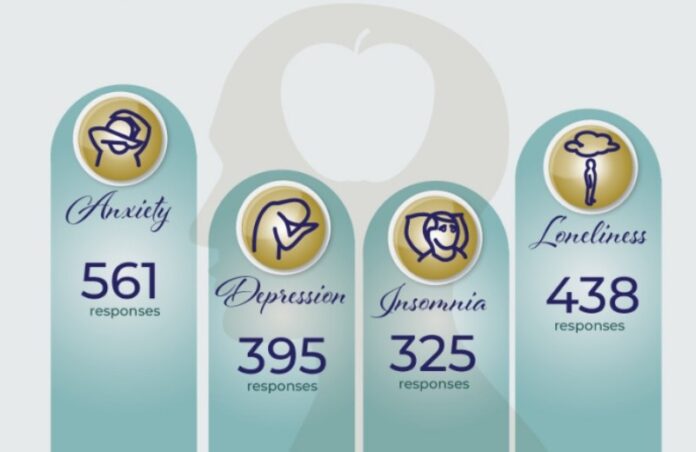
This article is part of our series “COVID-19: 1 Year Later,” exploring the ways COVID-19 has affected and changed daily life over the last year. For two weeks, we surveyed our readers on how COVID-19 has affected them. Read our survey results here. Today, we are sharing an overview of how our readers say COVID-19 has affected their physical and mental health. Stay tuned as we bring you interviews from local medical professionals on these topics.
Medical professionals saw a coming together like never before during the worst of the pandemic when the world shut down and deaths soared. When talking to local doctors and nurses about COVID-19, they speak of the many collaborations that were taking place within their professions online as they worked with their fellow practitioners in other parts of the county to learn about the ever-changing symptoms and effective treatments. But as they perfect treatments and look towards vaccinations bringing about herd immunity, generally, they worry about the citizens within their communities getting vaccinated and continuing to wear masks and keeping up social distancing when needed.
According to the Source’s recent online survey, 76.5% of those who responded either plan to get the vaccine or have already received it. This is news that medical professionals will be glad to hear. Most diseases can be mitigated with a minimum of 75% of the population receiving the vaccination. And the faster we get to that 75%, the faster we will get back to some kind of “normal”, although it will more than likely not be the same as before COVID-19.
 The concern by the medical community is the 23.4% who are either undecided or who do not plan on getting the vaccine, and the 30.7% who are not concerned about contracting COVID-19. While the likelihood of dying is diminishing with the use of the vaccine, for those who are not inoculated, the likelihood of dying when it could have been prevented goes up. As does the likelihood of infecting someone else. While most respondents of the survey had some symptoms, 19.7% had minimal symptoms or were asymptomatic. They could still be a carrier.
The concern by the medical community is the 23.4% who are either undecided or who do not plan on getting the vaccine, and the 30.7% who are not concerned about contracting COVID-19. While the likelihood of dying is diminishing with the use of the vaccine, for those who are not inoculated, the likelihood of dying when it could have been prevented goes up. As does the likelihood of infecting someone else. While most respondents of the survey had some symptoms, 19.7% had minimal symptoms or were asymptomatic. They could still be a carrier.
But those who have actually had the virus are not the only ones who have been victims of it. The elderly in retirement communities have been hit the hardest, as they were quarantined in their rooms. And while it has kept them safe from COVID-19, it has often made them more frail and sickly due to lack of human interaction. As it has done to many others. It is not just about physical health, but mental health as well. In the Source survey, 86% of respondents experienced some kind of mental agitation in the form of anxiety, depression, insomnia or loneliness.
 While most respondents were able to keep up their physical health during the pandemic, 20% have seen their health decline, and 47.7% saw their exercise routine decrease.
While most respondents were able to keep up their physical health during the pandemic, 20% have seen their health decline, and 47.7% saw their exercise routine decrease.
Still, the general feeling from respondents is that they have learned more about their health and health in general during the pandemic. From becoming more aware of how germs and viruses are spread to changing exercise and eating habits for the better, generally, the pandemic had brought healthy changes to those who took the survey.
As one respondent said, “I live a healthy lifestyle. But the pandemic has made me appreciate the importance of staying healthy. My mental health was shaken up a bit during the lockdown. But I recognized it, acknowledged it, and didn’t allow it to take over.”















